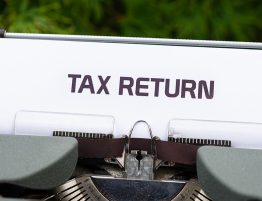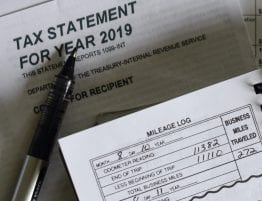The Paycheck Protection Program (PPP) of the U.S. Small Business Association (SBA) is a loan that helps businesses retain their employees during the coronavirus pandemic. SBA is forgiving loans of those employers who keep all their employees on the payroll for eight weeks and use the money for payroll, rent, mortgage interest, or utilities.
According to the SBA, “the following entities affected by Coronavirus (COVID-19) may be eligible:
- Any small business concern that meets SBA’s size standards (either the industry based sized standard or the alternative size standard)
- Any business, 501(c)(3) non-profit organization, 501(c)(19) veterans organization, or Tribal business concern (sec. 31(b)(2)(C) of the Small Business Act) with the greater of:
- 500 employees, or
- That meets the SBA industry size standard if more than 500
- Any business with a NAICS Code that begins with 72 (Accommodations and Food Services) that has more than one physical location and employs less than 500 per location
- Sole proprietors, independent contractors, and self-employed persons”
The loan will mature in 2 years and has an interest rate of 1%. Entrepreneur shares further details:
“The SBA Paycheck Protection Program (PPP) is the most significant small-business relief effort in modern history. A key component of the $600 billion-plus (and counting) stimulus rollout is that beneficiaries can have their loans forgiven so long as they use the funds for qualifying expenses, which can include payroll, rent, mortgage interest, and utility payments.
The program was extremely popular in round one, and the initial $350 billion in funding was claimed in only 13 days. The SBA began approving an additional $310 billion from the second round on April 27, but as of May 10, only $120 billion in funding remained. (A good chunk of which is owed to dozens of publicly traded companies having returned multi-million-dollar loans.)
Only $120 Billion in Round-Two PPP Funding Left
Here’s a quick table summary of PPP round-two data as of 5 p.m. EST on May 10.
Banks have been reporting that thousands of applications remain in their internal ques. In fact, many large banks are no longer taking new applications, as they are uncertain if they will be able to get their current inventory of applications funded before round-two money is allocated. Larger banks have told customers that they may be better off working with a smaller bank. Chase alone has said they have received more than 300,000 applications.
Forgiveness Rule Updates
The most enticing feature of the PPP loan is the ability to qualify for forgiveness. A small business that receives a PPP loan has eight weeks to use it for the qualifying expenses of payroll, rent, mortgage interest, and utilities. However, as small-business owners begin to use their PPP funds, many have found that the rules governing whether those funds will be forgiven are more complex than they first thought.
The SBA’s rulemaking relating to loan forgiveness created a requirement whereby a loan-forgiveness request must contain 75 percent payroll costs. The remaining 25 percent can be approved non-payroll costs, such as the aforementioned rent, mortgage interest, and utilities. So, for example, if you received a $150,000 PPP loan and spent $70,000 on payroll costs and $30,000 on rent, mortgage interest and utilities — such that you had a $100,000 forgiveness request — your loan forgiveness request would fail the 75 percent test, as payroll costs in the forgiveness request were only 70 percent.
The forgiveness request would be reduced until payroll costs equal to 75 percent of the total amount. In this example, that would be a reduction of approved non-payroll costs from $30,000 to $23,333. The other $56,667 not spent on approved costs would generally be returned to the bank or kept as a loan and paid back later under a two-year term at 1 percent interest.
FTE Reduction Rule
The 75 percent payroll-cost provision seems easy enough on the surface, but there is an additional rule that has caught many small-business owners by surprise and is one for which the SBA has recently provided relief. Under this rule, you are penalized if you do not bring back the same number of full-time equivalent (FTE) employees you had pre-pandemic.
So, for example, if you had 10 FTE employees pre-pandemic, but you only bring back six during the eight-week period that you have the PPP loan, you must reduce your forgiveness request by a multiple of the percent of FTE employees you have brought back. If you had a $100,000 forgiveness request, assuming it first met the 75 percent payroll cost test, that request would be reduced to $60,000. The effect of this rule is that small businesses are punished for not bringing back the same number of employees or more when it comes to loan forgiveness.
In many cases, re-hiring employees has proven to be difficult for small businesses, many of which remain restricted by shelter-in-place orders and may not be able to utilize their employees in a remote work environment. Others are finding it difficult to hire back workers who are receiving generous unemployment compensation, or who are worried about health conditions at the workplace.
It’s important to note that there is a workaround built into the law that says you can use the total number of FTE employees you have on June 30, 2020, instead of the number of FTE employees you have during the eight weeks. This rule will help small businesses that are unable to open entirely or otherwise unable to maintain their FTE staff now, as they are receiving their PPP loan funds, but that will be back up to their regular workforce by June 30, 2020.
Favorable SBA Guidance Will Help
The SBA recently issued favorable guidance addressing problems small-business owners have faced in bringing back workers. The guidance, issued last week, states that if a small business makes a written offer to re-hire a worker and that worker chooses not to accept, then the employee will not be counted against the small business for purposes of the FTE forgiveness-reduction rule.
This guidance is significant for small businesses that are struggling to recover and are counting on loan forgiveness. For most small businesses, obtaining loan forgiveness, as opposed to debt that must be re-paid in two years, will be critical to their future and whether they can stay in business and maintain their payroll.
Tax Pitfall
A recent IRS Notice will have the effect of a tax on small businesses that have their PPP loan forgiven. The CARES Act itself states that a forgiven PPP loan will not be considered taxable income to the small business. In essence, when you are forgiven debt by a bank or other party, the lender will typically issue the borrower a 1099-C for the amount forgiven, and the business or its owner will end up having to include that 1099 on their tax return and will have to pay tax on the amount forgiven as if it was income. Congress didn’t want this outcome, and as a result the CARES Act clearly states that forgiven loan amounts will not be considered a forgiveness of debt income.
Despite this provision in the CARES Act itself, the IRS issued Notice 2020-32 and stated that while the forgiven loan is not income, the business cannot expense the use of those funds if the funds are later forgiven because of tax rules already in existence regarding loan forgiveness and business expenses. The net effect of this is that small businesses will be taxed on their PPP loan forgiveness, as they will not be able to write off those expenses (payroll costs, rent, mortgage interest, utilities).
This issue is still developing and is one that has been a surprise for small-business owners and their accountants and lawyers.”
Fill out the form for a free and confidential consultation.









